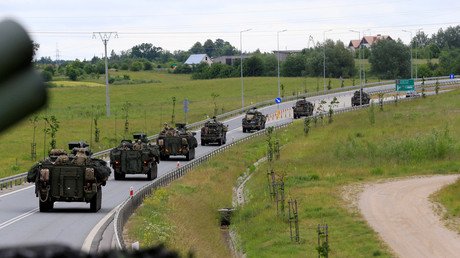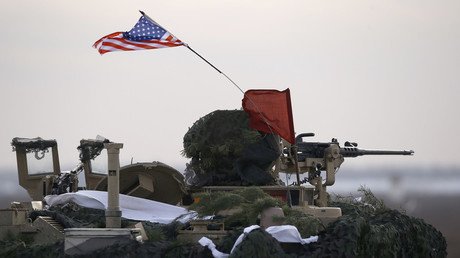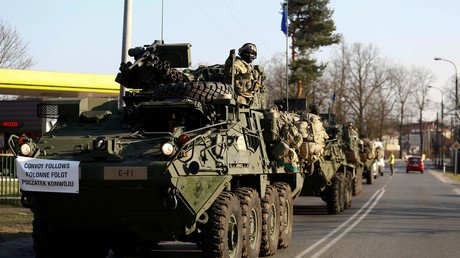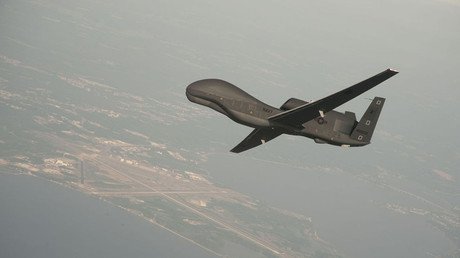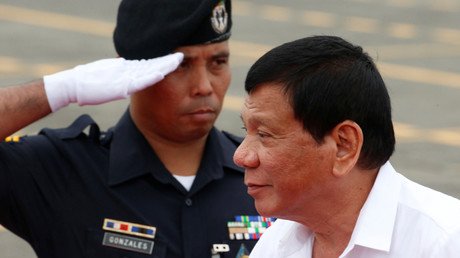Cannon fodder for nuclear war: What the US division deployed to Poland will become
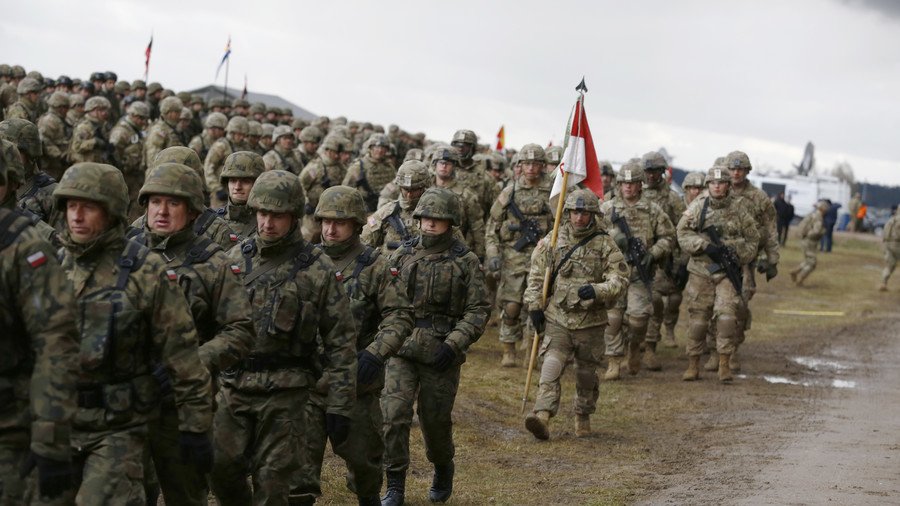
Recently, we learned that Poland is ready to pay up to $2 billion for a permanent US military base on its territory. The Pentagon has reportedly agreed to consider the deal.
International experts are divided as to whether or not it makes sense to deploy an American armored division to Poland, just 250km from the Russian border. The proposal by the Poles raises certain concerns, as not everybody agrees that it would be expedient or even advisable for the US. A recent Defense News publication speaks to that effect.
Poland is prepared to invest in the construction of the base, including its service buildings, housing, military equipment hangars, and warehouses to store everything that is needed for the deployment of a US division.
However, US experts say the Polish proposals raise more questions than they offer answers. The main question is whether or not Warsaw is ready to finance the base’s operations after the initial funds are tapped out. There is no clarity there yet. And this is not a secondary question for the US military command. A permanent base on Polish soil will cost quite a bit.
It is also not clear whether the Poles would be able to host the whole armored division as one camp, or if its units would be spread out through different military towns. It is an important question for the US military, because it will determine where the Americans will pull their forces from – continental America or western Germany.
Also, it took the US several decades to establish its base in Germany, and now they have wonderful, world-class training facilities there; whereas in Poland, they would have to start from scratch for the most part. They will basically be beginning construction in the middle of nowhere. It is unclear whether the Poles could find a location where the whole American division could conduct training exercises. Just to remind you, the US armored command has almost 300 tanks, 150 SPGs and mortars, 300 pieces of anti-tank equipment – a significant force. And every training field requires a certain capacity – it needs to fit a battalion, a regiment, or a division.
European Russia, for example, has only one military training field where a full division can carry out live-fire exercises. That’s why the Americans are asking themselves, “Maybe it would make more sense to use rotational forces in Poland?” They have already praised the positive effects of NATO’s rotational brigades and battalions in Eastern Europe.
These are not the most important issues concerning the redeployment of a US division to Poland. These are neither strategic nor operational concerns. Here is what’s really important, and it would be good to hear Polish experts on strategic and operational planning answer this question: “What facts are you using as the foundation of your claims about Moscow’s growing aggression?”
Maybe Polish intelligence agencies reported that the armed forces have gone on high alert? Did Moscow start to deploy forces and equipment to the theater of operations and strategic space zone? Did its general staff begin the strategic redeployment of troops from the Russian regions to the theaters of operations? Did Moscow start to deploy its strategic reserves? Polish experts will not be able to give a clear and definitive answer to any of these questions. All they can come up with are emotional speeches and highly subjective judgments.
Let’s ask ourselves, “How can one American division change the outcome of a potential armed conflict between the collective West (NATO) and Russia?”
Let’s look at the first scenario. A conflict starts, involving the use of conventional weapons. In this case, if we take the Polish warning about Moscow’s growing aggression seriously, Russia will have to carry out a strategic continental offensive. NATO will have to deploy at least two army groups for its defense. A large-scale conflict like this one with the use of conventional weapons will require dozens of divisions on both sides.
Even the first line of NATO’s defense will include at least four or five army corps and commands. In a hypothetical conflict of such magnitude, one division won’t make much difference. So, if a large-scale war breaks out in Europe, one US armored division is not going to matter much.
However, in the current situation, Moscow would not want this scenario. The West is far ahead with its conventional weapons and economic potential. To go to war using conventional weapons would mean total defeat for Russia. This is the main principle of war – its course and outcome depend on the balance of military and economic potentials of the opposing powers.
The second scenario of an armed conflict between the collective West and Russia involves nuclear weapons. In this case, the US military base in Poland will become a target of the FNS – a Russian military term for the first nuclear strike. It is a carefully planned, well-prepared and continually updated system of nuclear strikes that will cause maximum damage. It will take a couple of Iskander missile launches from Russia to annihilate the US division. It will not even have time to deploy.
There is also a third scenario – to start with only conventional weapons and then turn to the nuclear option. But this won’t really work for Moscow for the same reasons as the first one – it will mean heavy losses (people, weapons, and equipment) during the first stage of the conflict. Of course, there will be even more losses during the second stage, when nuclear weapons are deployed, but it makes no sense for Moscow to start a war from a losing position, when there is a serious imbalance of capabilities.
So, the only way for Moscow to start a war with the West is to exchange nuclear strikes. Additional divisions make no sense in this situation. And there will be no winner in this kind of conflict. Using weapons of mass destruction will lead to catastrophic outcomes for the countries that are involved, as well as the rest of the world (and they have to understand this).
Now, let’s talk about the key matter – the big strategy. Though Russo-Western relations are at their lowest point, there are no reasons to resort to military action. There are no territorial, economic or ideological contradictions between Russia and the West that could lead to a full-scale war in Europe. All prudent politicians and military officials understand that. At least nobody was able to lay out a clear strategy for the opposing parties in such a war.
So, deploying an American division in Poland will not provide any strategic advantages for NATO forces. In the event of conventional warfare, the US armored brigade will not play a significant role; while in case of a nuclear war, it is going to become cannon fodder.
Therefore, the establishment of a US military base in Poland will not improve the security situation in Europe and will further heighten tensions between Russia and the West, requiring more spending on the part of the US, NATO and Poland.
Whether all this is necessary is highly debatable.
Mikhail Khodarenok, military commentator for Gazeta.ru
Exclusive for RT
Like this story? Share it with a friend!
The statements, views and opinions expressed in this column are solely those of the author and do not necessarily represent those of RT.
